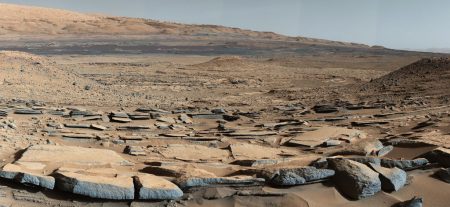A vast area on Mars once not only had water but also provided the conditions needed for microbes to exist, according to a new study co-authored by University of Guelph researchers.

Physics post-doctoral researcher Jeff Berger, physics professor Ralf Gellert and scientists at universities in Ontario and New Brunswick analyzed data from the Mars Curiosity rover and found significant concentrations of zinc and germanium at Gale Crater on the red planet.
Referring to both elements found in diverse rocks encountered by the rover over nearly 20 kilometres, Berger said their “widespread occurrence points to significant hydrothermal activity.”
Such movement of heated water often leads to growth of microbial communities on Earth, including the ocean floor, said Berger, lead author of the paper.
“We are not able to say for certain that microbes existed on Mars, but our findings indicate that Mars once had all the elements necessary due to the presence of hydrothermal activity,” said Berger.
“Hydrothermal deposits are one of several important targets for exploration because they have a higher probability of being a habitat for microbes and preserving their fossils. Hydrothermal sites are great for microbiology because the heat promotes chemical reactions, and the hot fluids have high concentrations of dissolved elements that the microbes use for food.”
Gale Crater is believed to have formed roughly 3.7 billion years ago when an object slammed into Mars. The crater was once occupied by a lake and streams.
The research team used Curiosity’s alpha particle X-ray spectrometer (APXS), a device that analyzes rocks to determine what elements they contain.
Gellert headed the international group of scientists that developed the instrument.
“The APXS is very useful in determining the chemical story of what we are seeing,” said Gellert.
For several years, the rover has climbed uphill through the sediments of Mt. Sharp, moving from older to younger rocks.
“We hope to find soon some evidence in the rocks for the changes in the Martian environment some 3.5 billion years ago that transformed Mars from a habitable environment to the arid planet it is today,” said Gellert.
